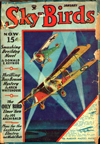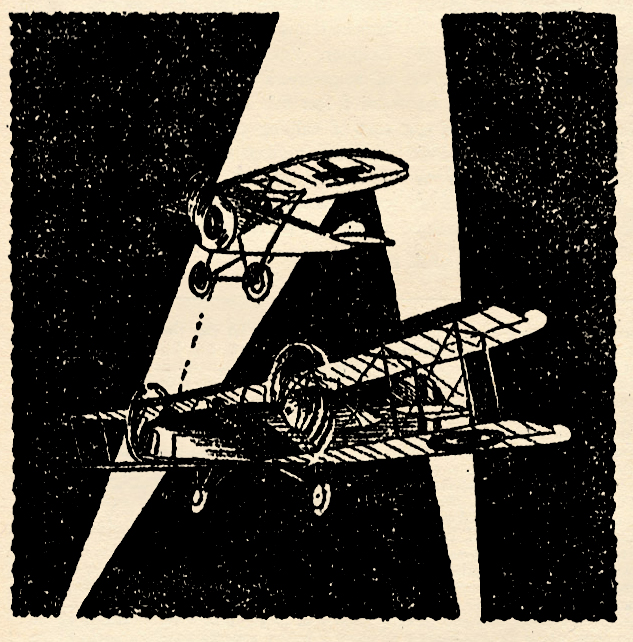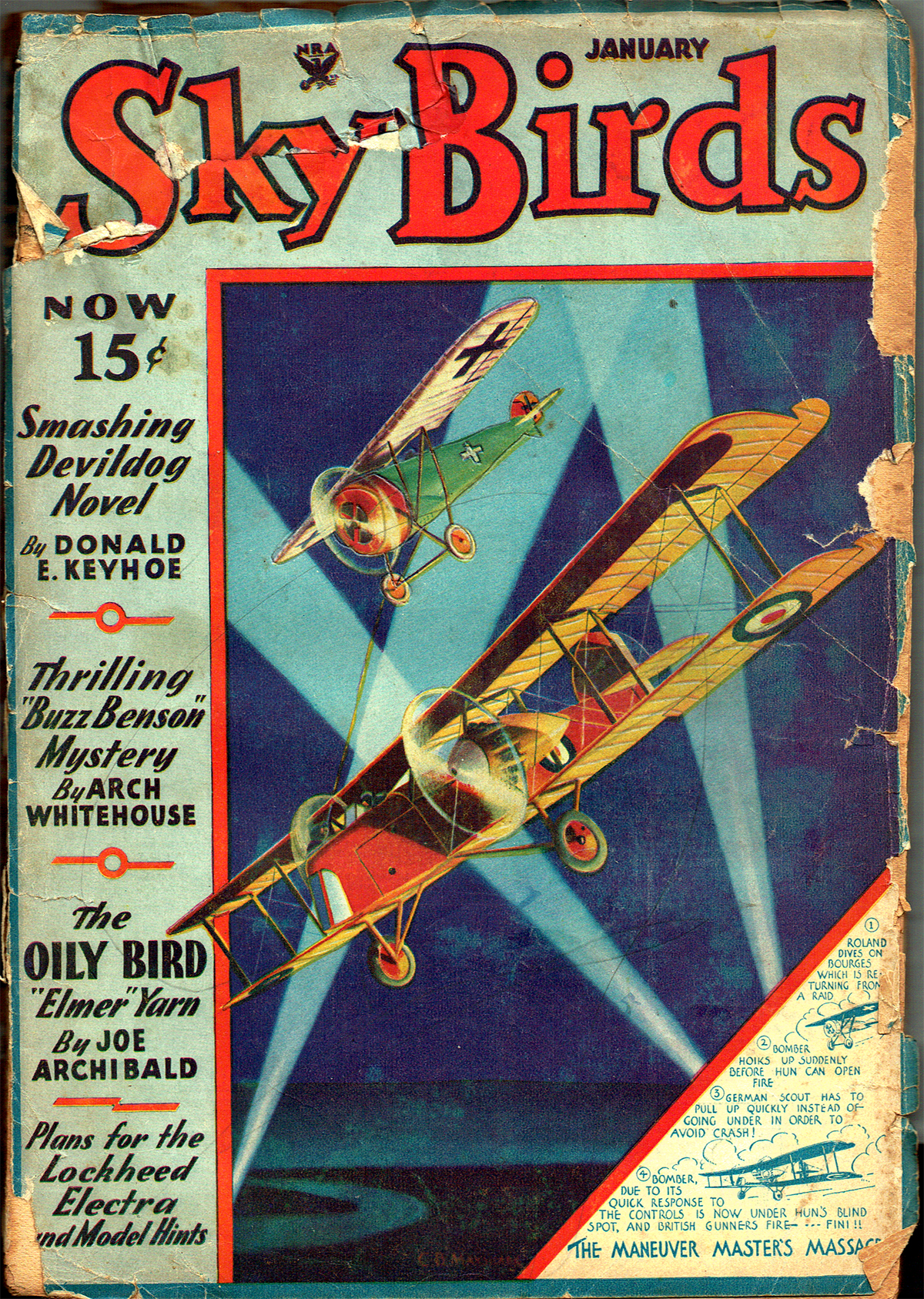“Sky Birds, January 1935″ by C.B. Mayshark
THIS May we’re celebrating the genius that is C.B. Mayshark! Mayshark took over the covers duties for Sky Birds with the July 1934 and would paint all the remaining covers until it’s last issue in December 1935. At the start of his run, Sky Birds started featuring a different combat maneuver of the war-time pilots. The lower corner presenting a play-by-play of that month’s maneuver with the remainder of the cover illustrating it. For January 1935 issue Mayshark gives us “The Maneuver Master’s Massacre!”
Combat Maneuvers of War-Time Pilots:
The Maneuver Master’s Massacre
IT IS the concensus of  opinion that the Handley-Page bombing plane was the most efficient machine of its type ever to lift its wings above the shell-torn vistas of France for the Allied cause. There is no doubt that this opinion is correct in every respect. However, Boulton and Paul of Norwich, England, constructors of fighting aircraft, built late in the World War a bomber which might even have surpassed the famous Handley-Page if it had had time to prove its merit.
opinion that the Handley-Page bombing plane was the most efficient machine of its type ever to lift its wings above the shell-torn vistas of France for the Allied cause. There is no doubt that this opinion is correct in every respect. However, Boulton and Paul of Norwich, England, constructors of fighting aircraft, built late in the World War a bomber which might even have surpassed the famous Handley-Page if it had had time to prove its merit.
The Boulton and Paul “Bourges” bomber, pictured on this month’s cover, is one of the most remarkable wartime aeronautical engineering feats ever accomplished. The most amazing feature of the ship is the small overall dimensions. Bombers have always been thought of as huge, clumsy-looking craft, with none of the sweet lines of grace usually associated with the Sopwith Camel or the Bristol Fighter. Not so with the “Bourges.”
This machine combines the speed, climb, and maneuvering abilities usually connected with a small single-seater, with the range and fuel carrying capacity expected of a large bomber. The essential measurements of the “Bourges” are as follows: Span, 54 feet; overall length, 87 feet; gap (uniform), 6 feet, 6 inches; and chord, top plane, 8 feet, bottom plane 6 feet, 6 inches.
The ship is powered with two 300-horsepower A.B.C. “Dragonfly” stationary radial engines. These motors attain for the ship a speed at ten thousand feet of 124 miles per hour and a landing speed of 50 miles per hour. The fuel tank capacity in hours is 9.25. Besides the pilot, the ship carries gunner-observers in the forward and aft cockpits.

The maneuver on the cover depicts the method by which the bomber might be expected to get itself out of a tight spot. Bombers returning from night raids must be constantly on the lookout for surprise attacks.
As the German Roland dives on the bomber, it falls away, slowly waiting until that time when all airmen, by means of a sort of sixth sense, know that they can expect to feel tracer splashing through their fabric.
Suddenly the “Bourges” jerks up, taking the chance that the Hun will pull up, too, rather than crash. Of course, the German does pull up frantically, thinking only of getting his wheels away from the tail assembly of the Britisher. As his ship gains a little altitude, the German pilot is thinking that he has never seen a big ship move so fast. He has been tricked completely, and as he looks down over the side into the glare of his own searchlight beams to get his bearings, he realizes that he is whipped. British bullets are already smashing his plane to pieces. With controls shot away the Roland sinks over into a flat spin. A few minutes later, it crashes in German territory, and a very lucky Hun pilot hurries back to his airdrome to tell in wide-eyed amazement of how a certain British bomber, the equal of which he had never seen, was as maneuverable as his own single-seater.
The ship in which the German had such a narrow escape was a Roland parasol monoplane which was built by the L.F.G. firm. It was a high-performance single-seater scout, built primarily for patrol and escort duty, and designated as type D XVI. This ship was very smoothly streamlined, and the absence of wires facilitated in cutting down resistance. The power plant consisted of one 200-horsepower, eleven-cylinder Siemens engine.

Sky Birds, January 1935 by C.B. Mayshark
(Combat Maneuvers of War-Time Pilots: The Story Behind This Month’s Cover)




